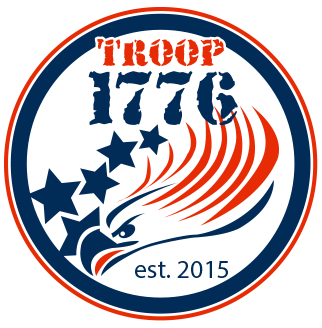Here are the Boy Scout ranks and a brief description of the associated character lessons:
Scout: Joining requirement
After meeting age requirements and finding a troop, the Scout learns basic scout knowledge such as Scout sign, salute, handshake, oath, motto, slogan, promise. The young Scout must also demonstrate how to tie a square knot.
Tenderfoot: Safety, fitness and high adventure preparedness
The Tenderfoot Scout shows and packs camping gear, camps overnight with the Troop in a tent he helps pitch, ties more complicated knots, participates in a flag ceremony, helps prepare meals and can describe safe hiking and trail rules. By now, the Scout can demonstrate basic first aid skills and has shown improvement in personal physical fitness benchmarks.
Second Class: Camping
The Second Class Scout demonstrates compass work and basic orienteering and map reading on a 5 mile hike. He must demonstrate basic fire building, axe sharpening and use and prepare a meal for his patrol. Safe swimming, more advanced first aid, and identification of dangerous wildlife is also required. The Scout is introduced to service projects; an essential component of Scouting with this rank.
First Class: Independence and self-sufficiency
The First Class Scout demonstrates that he can now fend for himself in the outdoors. He demonstrates how to correctly identify direction and location without a compass. His cooking skills are put to the test as he plans and executes a full day’s menu using safe food handling and a hot stove. By now, he’s a productive member of the Troop since he’s participated in at least 10 Troop activities, held at least one position of authority and has attempted to recruit new boys. As well, the First Class Scout has met with elected officials or other civic leaders.
Star: Service
The Star Scout transitions into a new role in the Troop. He is now a leader, not just a learner. The emphasis on his development is driven by leadership to his Troop and service to his community. There are requirements to reach minimum community servicehours and merit badge attainment goals.
Life: Leadership and Eagle preparedness
The Life Scout leads by example. His commitment can be summed up by tenure, community service and leadership positions within the Troop. It’s time for the boy to take a serious look at his path to Eagle Scout and to mentor other boys in the Troop to reach the same goal.
Eagle: The Goal
Eagle Scouts must complete 21 merit badges and a comprehensive and challenging Eagle Scout service project that must pass rigorous standards from BSA and substantially benefit a community or service organization other than the Boy Scouts of America. The project is designed to be a long-lasting tribute to the hard work and legacy of Scouting. Eagle Scouts can go on to earn Eagle Palms beyond the Eagle Scout rank. The Palms demonstrate continued involvement in the Scouting program.
